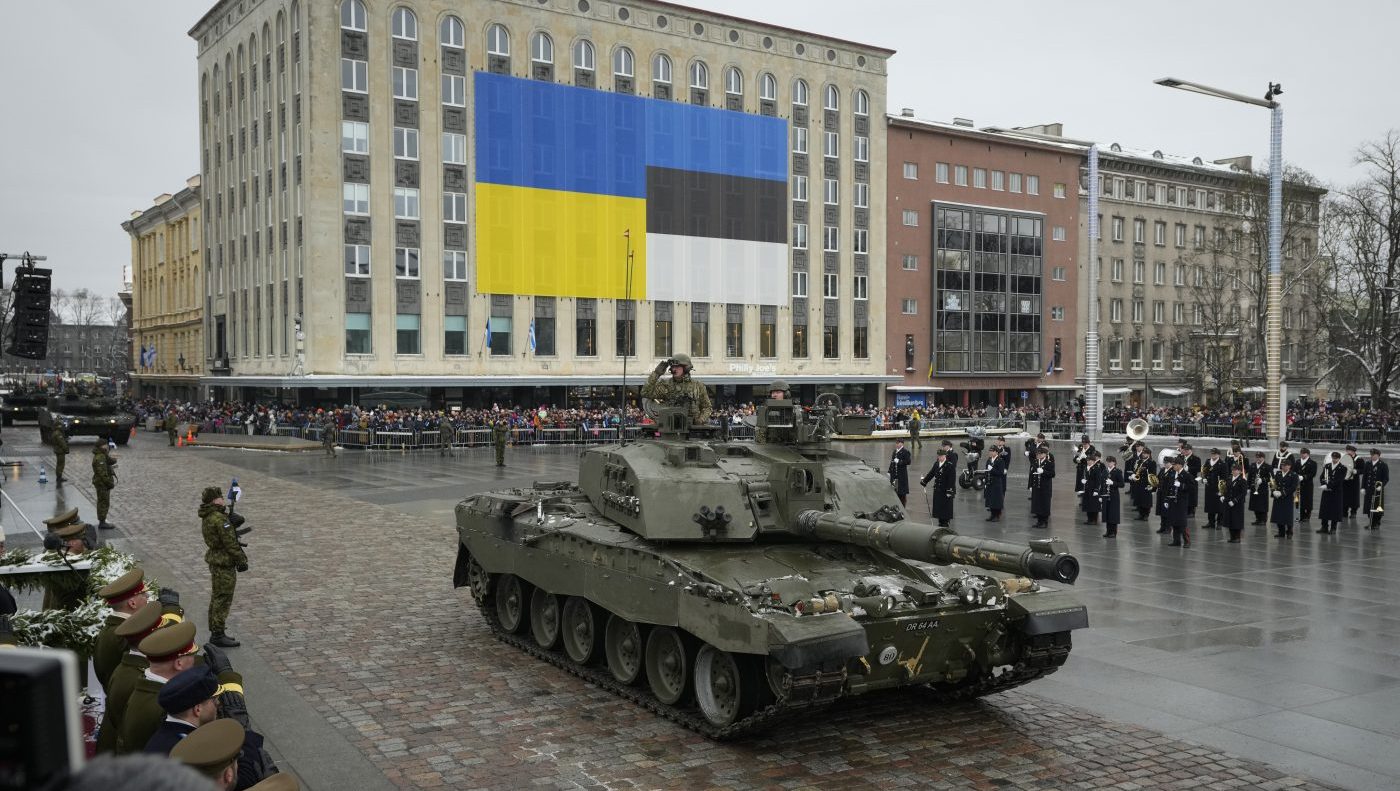Little Estonia is no longer afraid of the Russian Bear
Oh, how the mighty have fallen!
Vladimir Putin used to speak of the Russian army as the second-most powerful fighting force in the world. But his war against Ukraine has clearly shown, as the Ukrainians like to joke, that the Russian army is now the second-most powerful fighting force in Ukraine.
Russia’s Supreme Leader has in fact managed to transpose Peter Sellers’s 1959 comedy “The Mouse that Roared” to the post-Soviet space, turning the Russian army into a joke.
Sellers played the leader of a tiny country with financial troubles. He concludes that, since losing a war against the U.S. guarantees American financial support for the loser, it would make sense for his tiny army to invade America, surrender and “suffer” the consequences.

Since Russian history doesn’t fully imitate art, Putin’s version of “The Mouse that Roared” transforms one of Russia’s smallest neighbors into a potential invader of Russian territory. I’m talking about Estonia, a country of 1.37 million citizens and 17,500 square miles, of course. Russia’s respective numbers are 146 million citizens and 6.6 million square miles.
Here’s a brief excerpt from a recent interview between an Estonian journal and Maj. Gen. Vahur Karus, chief of the General Staff of the Defense Forces.
The interviewer says the following: “Our NATO defense plan was that there would be a certain number of days, for example 10 days, that we would have to withstand here independently against the Russians…the new plan is such that we must be able to crush the Russians, if they were to attack Estonia, in their own territory, where the troops that are going to attack Estonia are stationed. This is a huge change.”
And here’s Karus’s response: “Yes, absolutely, but that was brought about by the change that the war in Ukraine brought to many NATO allies. We can no longer wait to be hit over the head with a sledgehammer, but we have to be the ones who are able to do certain things first.”
In other words, Estonia is planning to preemptively invade Russia if relations between the two countries reach a boiling point.
To appreciate just how huge a change this is, consider that the RAND Corporation argued in 2016 that it would take Russia just three days to overrun all three Baltic states. Now, thanks to the Russian army’s abysmal performance in the war against Ukraine and the enormity of its losses in personnel and materiel, even the tiny Estonian mouse thinks it can roar at the Russian bear and get away with it.
According to the Wall Street Journal, Russian casualties in the war amount to about 200,000 dead and 400,000 wounded. Ukrainian sources estimate that Russia has lost 8,705 tanks, 17,093 armored combat vehicles, 18,177 artillery systems, 369 planes, and 328 helicopters. In addition, Ukraine has driven the Black Sea Fleet into a corner of that sea and destroyed many refineries and ammunition dumps. With that kind of record, it’s small wonder that Estonia’s generals think they can do more than just hold off a Russian attack for 10 days. They should be able to take the war to Russia proper.
If Estonia is thinking that it has the capacity to roar, it is a good bet that Latvia, Lithuania, Azerbaijan, Kazakhstan and Uzbekistan — and possibly several other former Soviet republics — feel the same way.
In short, Putin has brilliantly managed not only to demote Russia to a second- or third-rate power, but also to encircle it with potential enemies. It takes genius to convert a regional power and near-superpower into a country that no longer puts the fear of God into its mouse-like neighbors.
Putin has no one to blame for this shameful state of affairs but himself. Consider the casualties: Given modern battlefield medicine, for every dead Russian, there should be three to four wounded. But instead of a 1:3 or 1:4 ratio, Russia is at 1:2 (200,000 dead and 400,00 wounded), which means that Russian generals, like Putin, are indifferent to massive battle deaths and providing wounded soldiers with timely medical assistance. That’s no way to win a war.
In contrast, according to the Journal, Ukraine has suffered 80,000 deaths and 400,000 wounded. This 1:5 ratio that suggests that Ukrainians are making every effort to save lives. (In fact, President Volodymyr Zelensky claims that the 80,000 figure is a “lie” and that the real number is “significantly” lower.)
Estonians are fully aware of Putin’s cockamamie approach to warfare. Their armed forces are small — 60,000 is the planned wartime size — but they could just be perfectly adequate to invade Russia, throw its army off balance and accomplish the equivalent of Ukraine’s Kursk incursion. If Estonia’s NATO allies follow up with military assistance — a big if, perhaps — the mouse that roared might just end up winning the battle and the war.
Alexander J. Motyl is a professor of political science at Rutgers University-Newark. A specialist on Ukraine, Russia and the USSR, and on nationalism, revolutions, empires and theory, he is the author of 10 books of nonfiction, as well as “Imperial Ends: The Decay, Collapse, and Revival of Empires” and “Why Empires Reemerge: Imperial Collapse and Imperial Revival in Comparative Perspective.”
Copyright 2024 Nexstar Media Inc. All rights reserved. This material may not be published, broadcast, rewritten, or redistributed..











